Publications
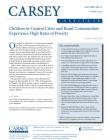
August 20, 2008
New U.S. Census Bureau data released in August highlight increasing similarities of poverty rates between children in urban and rural communities. This common indicator of child well-being is closely linked to undesirable outcomes in areas such as health, education, emotional welfare, and delinquency.
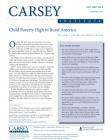
August 28, 2007
On August 28, 2007, new data from the U.S. Census Bureau's American Community Survey show that 22 percent of rural children are living in poverty, up from 19 percent in 2000. On average, rates are highest in the nonmetropolitan South (27 percent) and have climbed the most in the nonmetropolitan Midwest (by 3.9 percentage points).
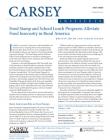
July 1, 2007
The Food Stamp and the National School Lunch Programs play a vital role in helping poor, rural Americans obtain a more nutritious diet and alleviate food insecurity and hunger. This fact sheet looks at the extent to which rural America depends on these programs and describes characteristics of beneficiaries of these federal nutrition assistance programs.
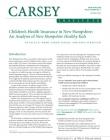
March 20, 2007
New Hampshire has been successful in achieving one of the lowest uninsurance rates for children in the country - 6 percent in 2005 (U.S. Census Bureau). The extent to which New Hampshire Healthy Kids has contributed to the state's success in achieving this low rate is the focus of this brief.

October 1, 2006
The rural vote is critical, but how do rural voters' views on issues such as abortion, same-sex marriage, and religion influence elections? This brief compares rural and urban views on these divisive issues and examines how much rural opinions vary within rural regions of the country.
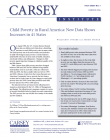
July 1, 2006
A study by the Carsey Institute, based on U.S. Census Bureau data, found that in forty-one states, a higher percentage of rural children live in poverty than did in 2000. While the national poverty level in 2006 was relatively stagnant compared to 2005's poverty level, the situation is clearly becoming worse for rural kids.
